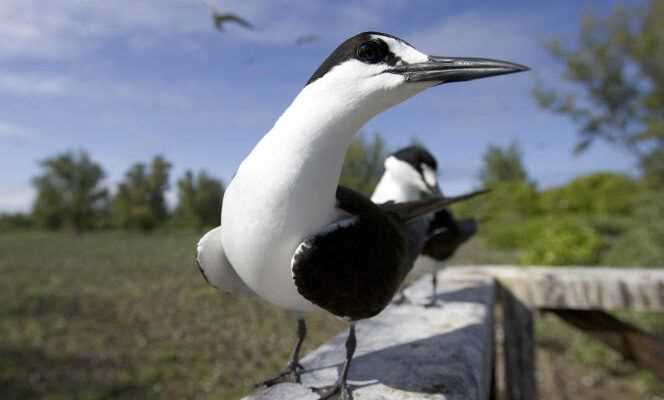UYou miss only being… and everything is repopulated. It’s hard not to think of the poet when reading the latest issue of the review Current Biology. A Franco-British team followed the consequences of the eradication of rats in two archipelagos in the Indian Ocean, the Scattered Islands, French possessions neighboring Madagascar, and the Chagos archipelago, fifty-five islands divided into seven atolls , administered by the United Kingdom. The article that it publishes Tuesday, April 21 paints a picture that is both impressive and reassuring. Once the rodent has disappeared, the whole ecosystem finds a new lease of life, on land but also at sea.
Professor at Lancaster University, Nick Graham had already shown the tribute paid by island biodiversity after the installation of the terrible rodent, this stowaway landed in the XVIIe and XVIIIe centuries thanks to expeditions or shipwrecks. In an article published in 2018 in Nature, the British ecologist and his team had compared the fauna and flora of the islands of the Chagos Archipelago infested by rats to those which had escaped his invasion. The result was spectacular: terrestrial species but also microalgae, sponges, corals and fish were affected.
The reason is simple: on these islands, birds play a pivotal role. “They feed on small fish on the high seas, then return to the islands to nest and deposit huge amounts of nutrients through their droppings., describes Nick Graham. These droppings are rich in nitrogen and phosphorus, and some of the nutrients escape from the islands and end up in the surrounding seawater where coral reefs thrive, and act as a fertilizer. ” However, birds, their eggs and their young are the favorite food of rats.
Return of seabirds
One question remained unanswered, underlines Nick Graham. “If we had shown that islands that had never been populated by rats could be very important for seabirds and nutrient inputs, we didn’t know if, and over what period, rat eradication could lead to the same advantages. ” This is where Matthieu Le Corre, professor at the University of Reunion and director of UMR ENTROPIE (Tropical marine ecology of the Pacific and Indian Oceans) came into play. While in Chagos, the elimination campaigns started only five years ago, some of the Scattered Islands have been free of rodents for fifteen years. With, on earth, spectacular results. “On Tromelin Island, the eradication of rats in 2005 was followed by a tenfold increase in the number of seabirds, from 500 pairs in 2005 to more than 5,000 pairs now., indicates the French researcher. This also allowed the return of five species which had not nested in Tromelin since 1836. ”
You have 24.55% of this article left to read. The rest is for subscribers only.
